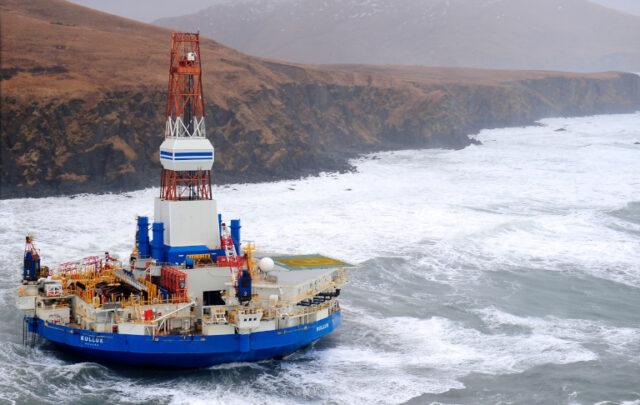The world’s major stock markets tried hard this week to ignore the proverbial elephant at the table — record high oil prices — but it is getting harder and harder to do so. Every time there is a ray of hope out of Iraq or Russia, the price of crude subsides briefly, only to continue its seemingly inexorable climb toward the level of $50 (U.S.) a barrel.
Even the OPEC oil cartel and its largest member, Saudi Arabia, seem to have lost their traditional ability to bend the market to their will. On three separate occasions since May, leaders of both, have promised the world more crude, and oil has sagged on the news. Each time, however, it has recovered and gone on to a new record.
In part, the global oil picture is a byproduct of decisions made by OPEC in the late 1990s, after it boosted production at the wrong time and prices crashed to $10 a barrel.
Determined not to let that happen again, the cartel kept a tight rein on supply, to the point where production capacity was crimped. All it took was stronger-than-expected demand from China, and the picture changed dramatically for the worse.
OPEC has repeatedly said the rise in crude, which hit another record of $49.40 a barrel in intraday trading yesterday, is being driven largely by traders. But the speculative interest in crude has actually declined over the past several months, and yet the price has kept climbing. Although part of the price (estimated at anywhere from $5 to $15 a barrel) is still influenced by traders playing on the market’s fear, the fact is that much of the fear is justified: OPEC hasn’t had this small a buffer of spare production capacity since the 1970s.
In July, the cartel pumped about 29 million b/d — OPEC says about 29.57 million, while the International Energy Agency’s latest report says 29.1 million. In any case, that was within a virtual hair’s breadth of the group’s maximum capacity of 30.3 million b/d, according to the IEA, and that includes full production from Iraq, which at its peak can produce about 2.5 million barrels.
Even after the recent boost in production by Saudi Arabia, the total will likely only hit 30 million b/d this fall, and OPEC estimates demand for its crude will hit 28.25 million b/d in the fourth quarter. That means spare capacity of less than two million barrels, or about 5 per cent of supply (the 10-year average is five million barrels).
Of course, OPEC only supplies about a third of the world’s oil; global production was 83.5 million b/d in July. But global demand is expected to rise by more than 2.5 million b/d this year to about 82 million b/d, according to the IEA, which is the fastest growth since 1980. That means OPEC’s spare capacity amounts to 2 per cent of demand — or a very small drop in a very large ocean. And that assumes Iraq is at capacity, which it isn’t; it’s only producing one million b/d.
Most OPEC members are already at full capacity. The IEA estimates that while Saudi Arabia had spare capacity of about 300,000 b/d last month, all the other so-called “OPEC-10” countries (excluding Iraq) combined for spare capacity of just 380,000 b/d. (Iraq had another 520,000 b/d of unused capacity in the month.) Meanwhile, the IEA continues to revise its demand forecast upward: In its latest update, it raised its estimate for this year by 750,000 barrels to 82.2 million. In other words, the upward revision alone eats up all of OPEC’s unused capacity, excluding Iraq’s notoriously unstable and unreliable output.
In a market under that kind of pressure, almost anything can cause a flare-up, and crude has two major flash points: Iraq and Russia. In Iraq, terrorism is still a factor, while Russia’s largest producer is in limbo because its senior executives are in jail and the Russian government has frozen its assets. OAO Yukos produces 1.8 million b/d, or more than several OPEC countries, including Indonesia. Losing all that crude would instantly soak up all of OPEC’s spare capacity.
Saudi Arabia says it is stepping up plans to bring new oil fields into production, which it expects will add another one million b/d of capacity by next year. However, the IEA says demand for OPEC crude will rise by more than one million b/d by the first quarter of next year, and will have climbed by two million barrels by the fourth quarter of 2005.
In other words, OPEC is like the Red Queen in Alice in Wonderland: forced to run faster and faster just to stay in the same place. It’s no wonder oil is so high — in fact, the real surprise may be that it isn’t higher.





